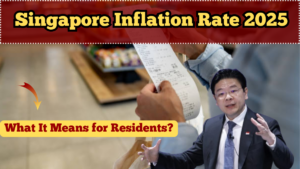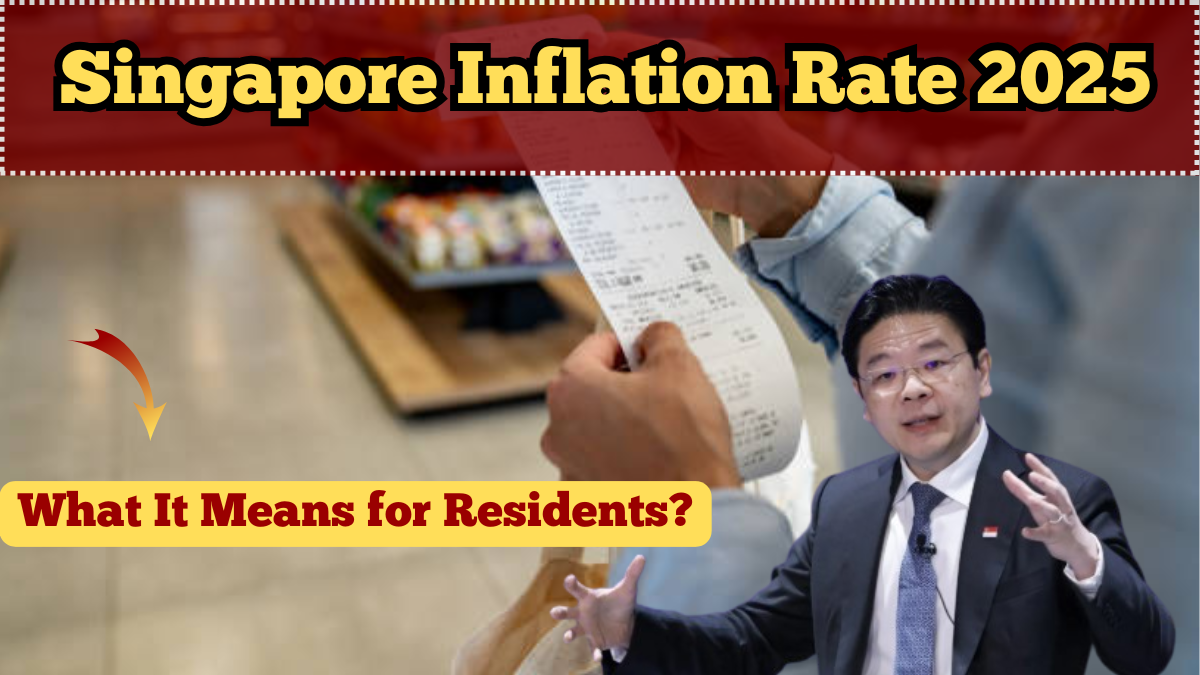In 2025, the Singapore inflation rate continues to shape daily life for citizens and businesses across the country. After several years of economic turbulence due to global price shocks and supply chain disruptions, Singapore has made significant progress in stabilizing its core inflation. However, the lingering effects of rising utility bills, food prices, and transport costs are still being felt by households—especially in lower- and middle-income brackets.
As one of Asia’s most stable financial hubs, Singapore’s ability to manage inflation is closely watched by economists and policymakers. The latest data from the Ministry of Trade and Industry (MTI) and the Monetary Authority of Singapore (MAS) offers a clearer picture of what residents can expect from the economy 2025 and how they should adapt their spending and saving strategies.

Current Inflation Trends in Singapore
The official inflation forecast for Singapore in 2025 shows a gradual cooling from the highs of 2022 and 2023. According to the MTI, overall headline inflation is expected to average between 3.2% and 3.5% this year. Core inflation, which excludes accommodation and private transport costs, is projected at 2.8%, slightly lower than last year’s 3.1%.
Key contributing factors to inflation in 2025 include:
-
Global energy prices stabilizing but still higher than pre-pandemic levels
-
Imported food costs remaining elevated due to regional supply constraints
-
Labour market tightness pushing up wages in some service industries
-
Public transport fare adjustments made earlier this year
While inflation is moderating, the cost of living remains a serious concern—especially in areas such as housing, food, and healthcare.
What It Means for Salaries and Wages
The impact of singapore inflation is most directly felt in salary negotiations, wage growth, and employee expectations. In 2025, the Ministry of Manpower has reported a median salary increase of 4.1% across all industries. However, this growth is not uniform and varies significantly by sector.
Sectors experiencing higher wage growth include:
-
Healthcare and eldercare, due to high demand and staffing shortages
-
Technology and finance, which continue to offer competitive packages
-
Construction and retail, where labour shortages drive up hourly rates
However, many lower-wage workers in food services, cleaning, and logistics are seeing smaller wage increases—often just enough to offset rising costs. To address this gap, the government continues to expand the Progressive Wage Model and Workfare Income Supplement in 2025.
Cost of Living Breakdown for 2025
Understanding how the cost of living singapore has changed is crucial for budgeting and financial planning. Here’s a breakdown of how inflation has impacted core household expenses this year:
Food
-
Average food prices increased by 3.6%
-
Imported staples like rice, milk, and cooking oil remain pricey
-
Hawker and food court meal prices up by $0.20 to $0.50 per dish
Housing
-
HDB resale prices remain high but are stabilizing
-
Rental prices for condos have increased by 4.5%, especially in central areas
-
Utility bills rose by an average of 5.2% due to higher electricity tariffs
Transport
-
Public transport fare adjustment of $0.10–$0.15 per trip implemented in Q1
-
Petrol prices remain elevated due to regional fuel supply constraints
-
COE premiums dipped slightly but remain high by historical standards
Healthcare
-
Insurance premiums and specialist consultation fees rose by 3–6%
-
Government subsidies for outpatient services have helped reduce out-of-pocket costs
These trends show that while inflation is not accelerating, the cumulative effect on household budgets remains significant.
Government Measures to Help Residents Cope
To ease the burden of singapore inflation, the government has launched a range of support measures in 2025, focusing on cash payouts, subsidies, and household grants.
Key support programs include:
-
CDC Vouchers: Every household receives S$500 in CDC Vouchers, redeemable for groceries and daily necessities
-
U-Save Rebates: Utilities rebates issued quarterly to lower- and middle-income families
-
S&CC Rebates: Service and conservancy charge rebates for eligible HDB households
-
Assurance Package: Additional payouts ranging from S$200–S$800 depending on income level and household type
These measures are part of the broader strategy under the economy 2025 framework to ensure inclusivity, financial resilience, and community stability amid inflationary pressures.
FAQs
What is Singapore’s inflation rate in 2025?
The projected overall inflation rate is between 3.2% and 3.5%, while core inflation stands at around 2.8%.
Which items have become more expensive this year?
Food, utilities, rent, and transport costs have all seen increases in 2025, especially imported goods and housing-related expenses.
Are salaries increasing to match inflation?
Yes, median wage growth is around 4.1%, though some sectors have higher increases while others are barely keeping up.
What help is the government offering to cope with inflation?
Support includes CDC vouchers, U-Save rebates, S&CC rebates, and direct cash payouts under the Assurance Package.
How does Singapore compare to other countries in managing inflation?
Singapore has managed inflation better than many global peers due to early monetary tightening, targeted subsidies, and strict fiscal control.
Click here to know more.
Aanchal is a passionate writer with a keen interest in storytelling, content creation, and creative expression. She enjoys exploring diverse topics and crafting engaging narratives that captivate readers.
